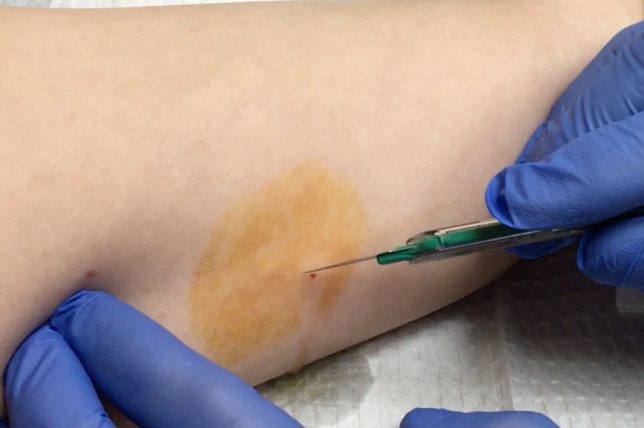Nexplanon removal should be a relatively straightforward and easy procedure. However, there are a few things you can do to make the job even easier. Number four is my favorite. Here are four tips for removing a Nexplanon.
1. Pick the right spot.
Move the device by pushing on the distal end to see where the tip bulges out. This is usually near the insertion site but it’s not always if the device has moved. The ideal incision uses the same scar but make sure the device will poke out with pressure at that incision point before making it.
2. Inject the lidocaine under the tip of the rod.
Injection of a local anesthetic immediately under the skin but above the rod can cause the tip of the rod to be pushed further away from the skin, making it harder to retrieve. On the other hand, injecting a local anesthetic underneath the tip of the rod will push the tip of the rod closer to the skin, making it easier to push through the incision and retrieve the device.
3. Make a parallel incision, not perpendicular one.
Instinctively, people want to make the incision perpendicular to the rod in the skin. I’m not sure why, it may simply be that when you hold a scalpel like a pencil it’s a more natural movement to cut from top to bottom rather than from side to side. But, whatever the reason, it’s much more advantageous to make an incision that is parallel to the rod. If this seems counter-intuitive, try it. The rod is much more likely to protrude through the incision when the incision is parallel to the rod than perpendicular and makes retrieval significantly easier.
4. Use an Adson pickup, not a hemostat.
When you try to grab the very tip of the rod with a hemostat, the rod typically slips away. This can be very frustrating after you’ve struggled to get the rod to protrude through the skin only to have it lose traction and slide back inside. I use an Adson pickup with teeth so that when I grasp the rod it won’t slip away. This saves an incredible amount of time and frustration.
What else?
Suture is almost never necessary, a Band-Aid will suffice. A pressure wrap for a few hours is useful to reduce the risk of bruising and stop bleeding. If the patient desires another Nexplanon, you can always insert another one right back in the same hole.
Check out the video below to see these tips in action:

